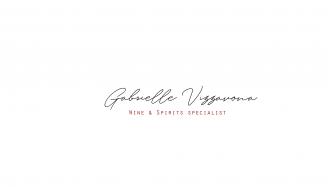The news came as a bombshell, despite the fact that President Donald Trump had long been hinting that he wanted to take punitive measures against several European countries by taxing 150 local products. He ultimately acted on his threats on October 18, 2019, ramping up the prices of French wines, Italian cheeses, Scotch and German coffee by a quarter as soon as they reach American soil. His act of revenge comes in response to Europe's subsidies for Airbus versus Boeing. After rumours of a further tax increase to 100%, the tension finally seems to be dropping between France and the United States, perhaps returning to normal soon. Jordane Andrieu, a former Burgundy winegrower who has been a wine merchant in Los Angeles since 2013, answers our questions about market trends and the impact of the tax. His Beverly Hills ‘Heritage Fine Wines’ includes a wine cellar, a bar and a restaurant focused on 240 wines, with a penchant for organic and mostly French listings.
Gabrielle Vizzavona: Has the Trump tax begun to have an impact on the market and if so, how?
Jordane Andrieu: The Trump Tax hasn't had a big impact on prices yet, but we're preparing for it. Importers had stockpiled in anticipation of the rise, and this allows them to keep their prices down, but not for long. I have asked my team to taste New World wines to find alternatives and prepare for the price hike, as my selection currently has 90% European wines, mostly French.
GV: The 100 % tax did not materialise in the end, which is a relief. Do you think the 25% tax is here to stay or will it be soon be removed?
JA: With the 100% tax, I was afraid but at the same time somehow convinced that we would find a solution. For the 25% tax, I'm not sure it's going to be removed soon. In the industry, it's said that for every $100 of European Union wine sold in the United States, $85 goes to U.S. companies. The damage caused to American businesses by the current 25% tax will near $10 billion and will result in the loss of 12,000 American jobs, not counting indirect jobs. The Americans have a lot to lose.
GV: How has the American wine market changed over the past ten years?
JA: People are turning to much more affordable wines. Wine merchants who, like me, are in uptown areas and have high costs, can't afford to charge too high a mark-up. With online sales, people are much more price-conscious. Mark-ups on fine wines are quite low, and on wines over $100, consumers compare prices a lot. You have to look for lesser-known wines.
GV: What are the current trends for wine in the United States?
JA: The trend in the United States has always favoured varietals, i.e. grape varieties. An American is more likely to choose wine depending on the grape variety from which it is made rather than the place where it is grown. Chardonnay and Cabernet Sauvignon are the most popular grape varieties, just ahead of red blends, Pinot noir, Sauvignon blanc and Pinot gris. However, the trend is gradually changing, fuelled by younger consumers – the more inquisitive 25/40-year-old Millennials – who are marking the end of the Parker generation. They have a tendency to focus more on appellation wines, certified organic or biodynamic. The more affordable regions, like Languedoc Roussillon, are doing well because they combine several factors such as organic, affordable prices, nice labels and young winemakers who make less extracted wines.
GV: Are the trends the same in Los Angeles?
JA: L.A is quite strongly influenced by the local wine regions (Santa Barbara, Paso Robles, Napa, Sonoma, Central Coast), which offer extracted, ripe red wines and buttery, rich whites. Again, habits are changing in favour of lighter, less woody wines. To promote change, misconceptions about grape varieties have to be overcome. In my wine bar, I am often faced with situations where customers ask me for a dry white wine, specifying that they don’t want Chardonnay because they find it too “creamy”. I serve them a tense, new-generation white Burgundy, which they love and are surprised when I tell them it’s a Chardonnay. We need to educate consumers!
GV: Do you think, though, that American consumers know more about wine than before and that there is more interest shown by generations Y and Z?
JA: Yes, without a doubt, the Millennial generation is more familiar with the wines it drinks, and is therefore moving away from the knee-jerk grape variety choice and reaching out more for appellations. The tools available give them the opportunity to be better informed and make better drinking choices.
GV: What are the sources that allow consumers to educate themselves and choose their wines?
JA: Applications such as Vivino, information on the internet and the increasing number of wine bars that are offering education to their customers are in my opinion the main sources of education. It's more common for restaurants to recruit wine managers, sommeliers or a specialist to put together their wine list. These experts make knowledge accessible to their patrons. Conversely, I don't think that the traditional press or guidebooks help much – they’re too old school.
